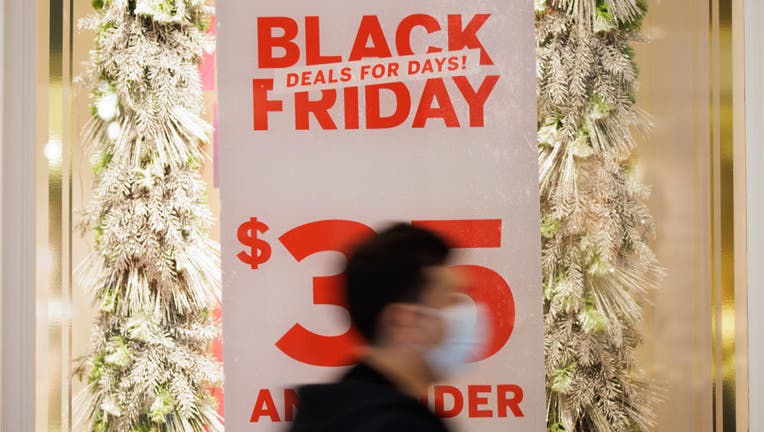2022 holiday sales expected to be slower than last year

SAN JOSE, CA - November 26: A Black Friday shopper walks by a store banner promoting Black Friday deals on Friday, Nov. 26, 2021, in the Westfield Oakridge mall in San Jose, Calif. (Photo by Dai Sugano/MediaNews Group/The Mercury News via Getty Image
NEW YORK - NEW YORK (AP) — The National Retail Federation, the nation’s largest retail trade group, expects holiday sales growth will slow to a range of 6% to 8%, compared with the blistering 13.5% growth of a year ago.
But inflation can pump up sales even if people are buying less, and with prices surging to uncomfortable levels, industry analysts believe that inflation-adjusted sales could be flat, or even negative this year.
Holiday sales have risen an average of 4.9% over the past 10 years but Americans ramped up spending during the pandemic, which accounted for some outsized sales numbers.
SUGGESTED: Black Friday shopping strategies to save the most money
The NRF on Thursday predicted that sales in November and December will grow to between $942.6 billion to $960.4 billion. Holiday sales exploded during the pandemic with Americans splurging on pajamas and home goods, mostly online.
The group expects that online and other non-store sales, which are included in the total, will increase between 10% and 12% to between $262.8 billion and $267.6 billion
The numbers exclude automobile dealers, gasoline stations and restaurants.

Staying safe while holiday shopping
A safety expert explains extra steps you can take to stay safe from would-be bad guys with an eye on your purchases and your money.
The forecast considers a variety of indicators including employment, wages, consumer confidence, disposable income, consumer credit, previous retail sales and weather.
The forecast is in line with a slew of holiday forecasts from various research and consulting firms point to a sales slowdown from last year. AlixPartners predicts holiday sales to be up anywhere from 4% to 7% from last year, which was up 16%, according to its calculations.
SHOPPING: The risks of using buy now, pay later to finance holiday shopping on Black Friday
Consumer spending accounts for nearly 70% of U.S. economic activity, and Americans have remained resilient even with inflation near four-decade highs. Yet surging prices for everything from mortgages to rent have upped the anxiety level. Overall spending has slowed and shifted increasingly toward necessities like food, while spending on electronics, furniture, new clothes and other non-necessities has faded.

Don?t go into debt over holiday shopping
Financial expert Marc Davenport discusses how to shop smart and within budget this holiday season.
Shoppers are also getting an early start for the holiday shopping season, picking up gifts in October as retailers like Walmart and Target push holiday discounts earlier to help shoppers spread out their spending in difficult economic times.
Matthew Shay, CEO and president of NRF, noted that shoppers remain steadfast in their spending but, "in the face of these challenges, many households will supplement spending with savings and credit to provide a cushion and result in a positive holiday season."
RELATED: Black-owned Super Market opened in Houston on Black Friday
Inflation in the United States accelerated in September, with the cost of housing and other necessities eliminating much of the pay gains. Overall prices rose 8.2% in September compared with a year earlier, down slightly from August, according to the latest government report.
The Federal Reserve increased its benchmark interest rate Wednesday by three-quarters of a point for a fourth straight time in the latest bid to cool inflation, and consumers spending.
It was the central bank’s sixth rate hike this year — a streak that has made mortgages and other consumer and business loans increasingly expensive.

